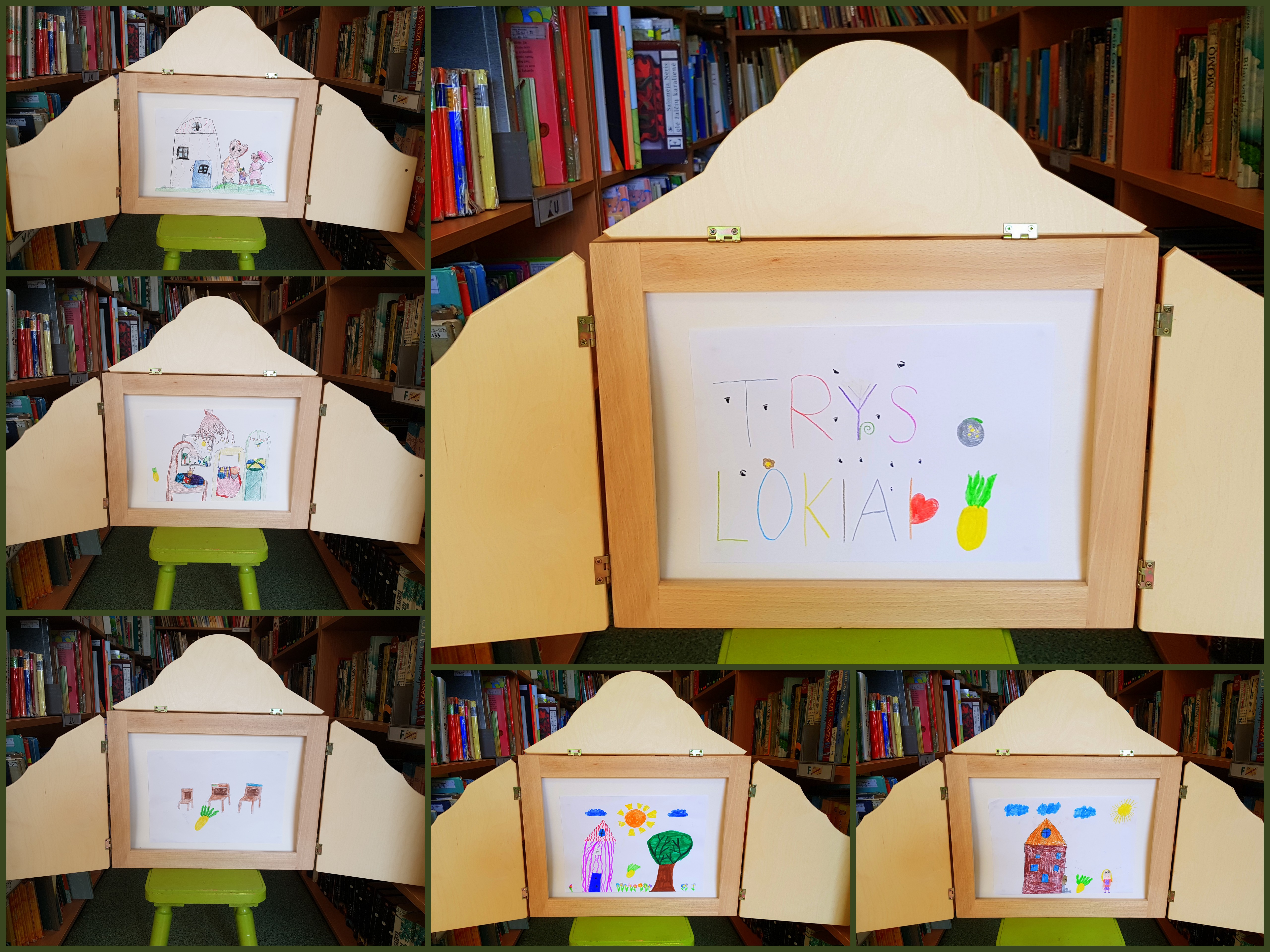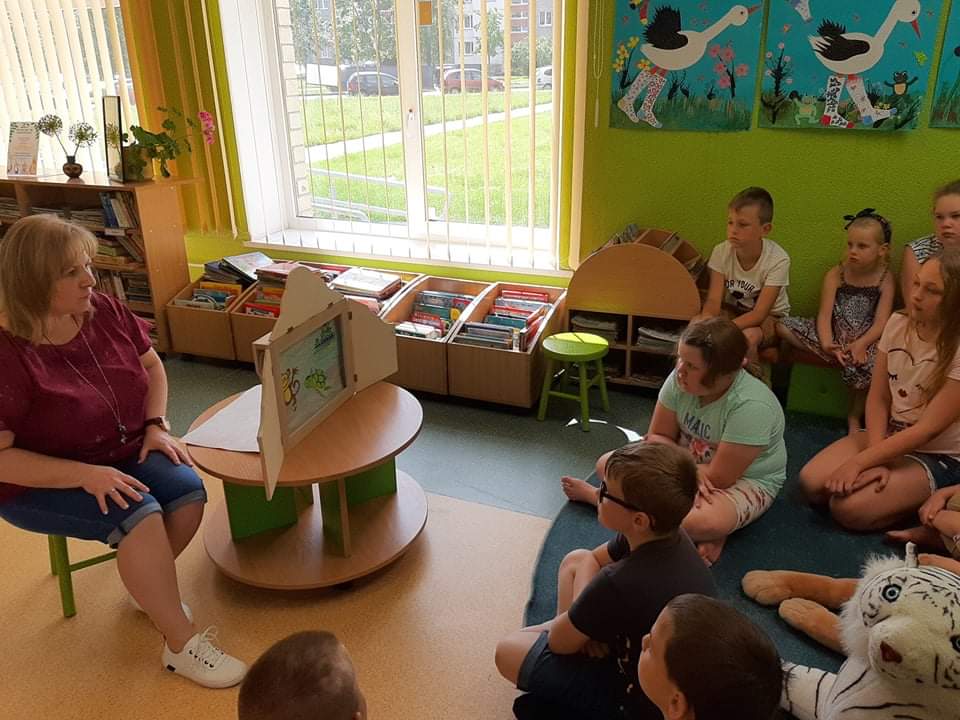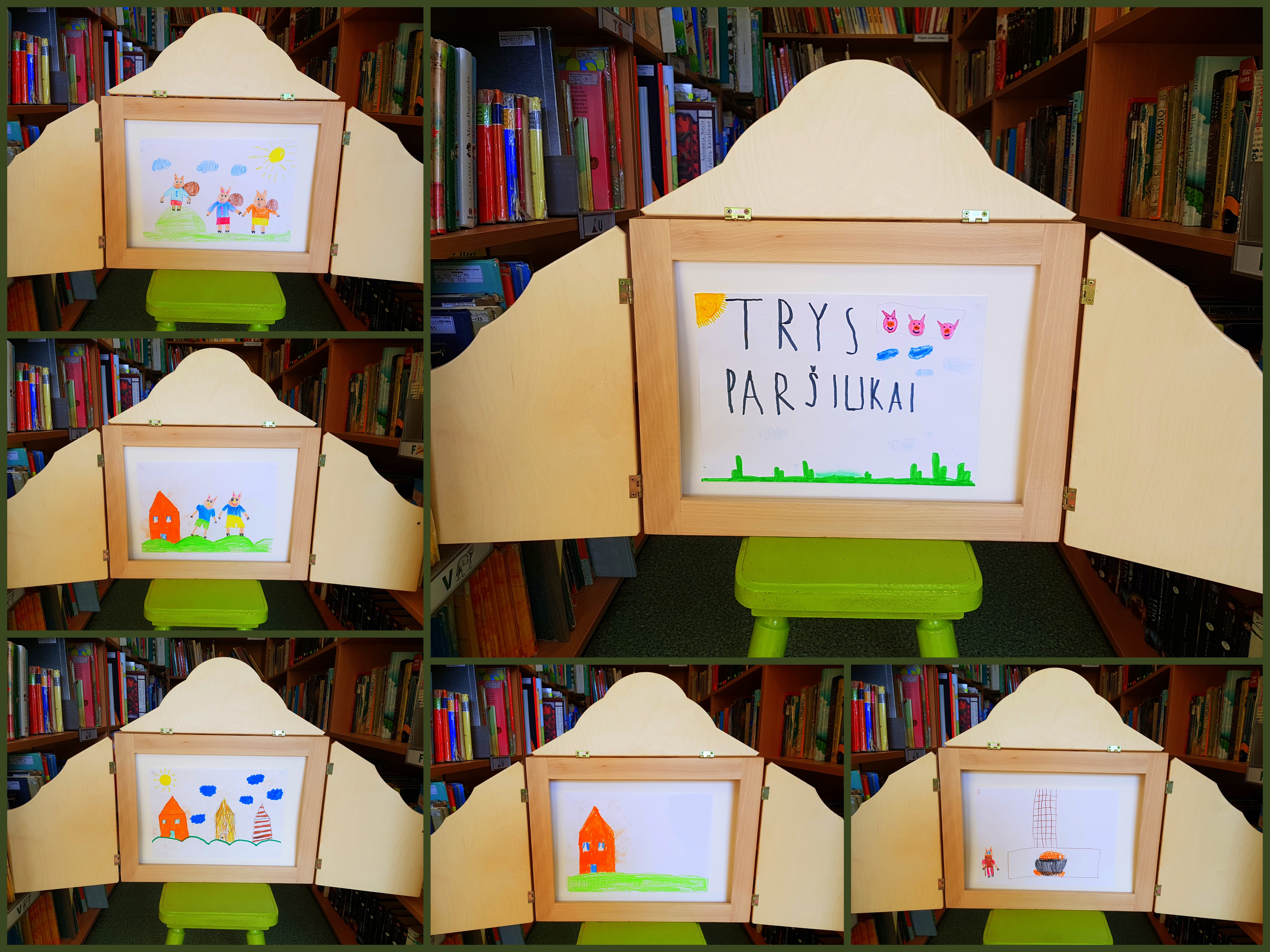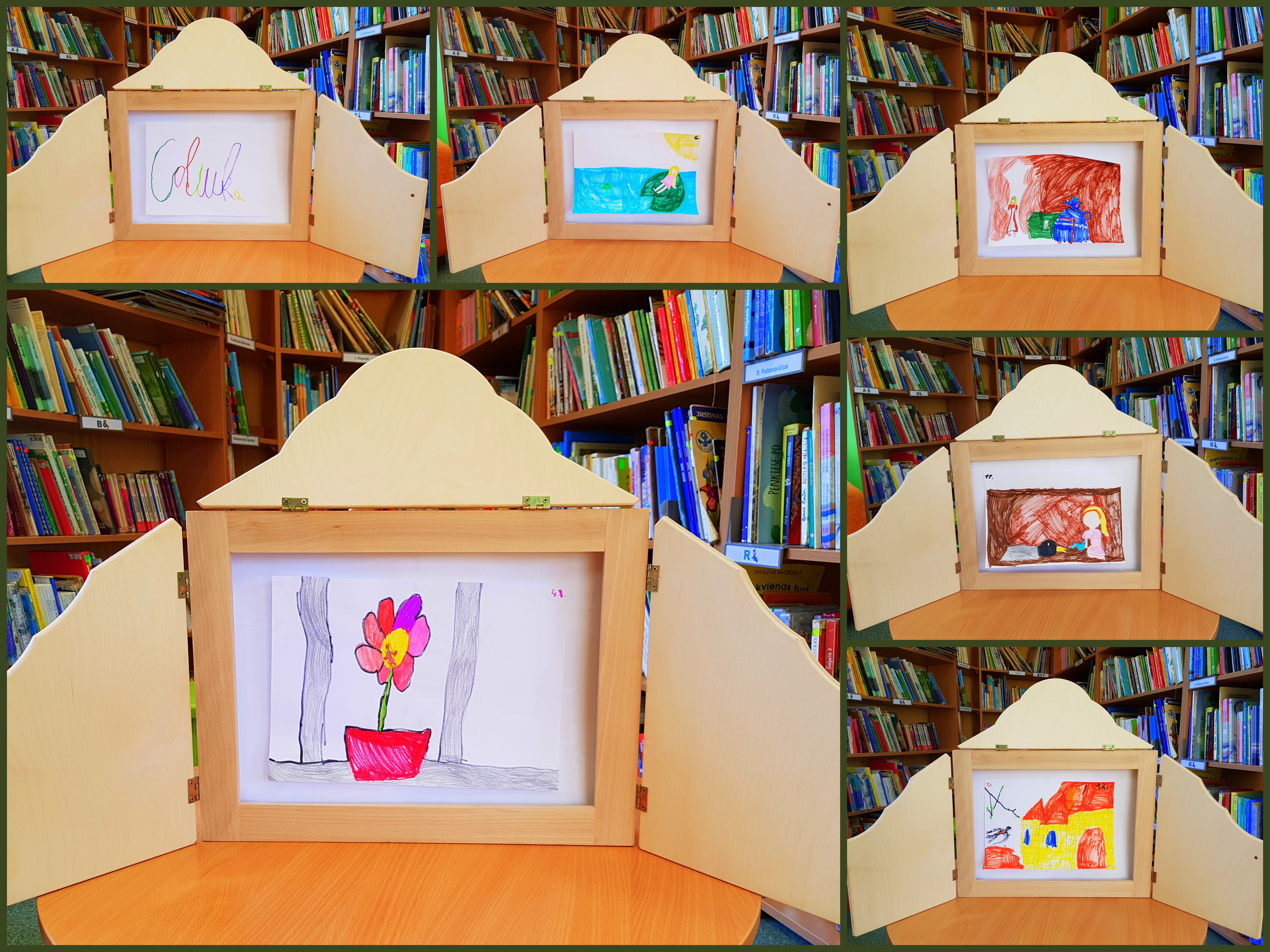Last 22th to 26th June 2020 the workshop “Kamishibai theater and book” was held in the Children literature department “Žalioji pelėda”. It was part of the children and youth art project “The theater begins from…the library! -2”. Children aged 8-11 read fairytales and learned to create kamishibai stories. Kamishibai is a good solution to educate young readers and promote reading.
Kamishibai (kah-mee-shee-bye) or “paper-theater” evolved from a form of vibrant street storytelling that was extraordinarily popular throughout urban Japan from the 1920’s to the 1950’s. Before there were television and movies for children in Japan, special storytellers, called “Kamihibai Men”, would bring stories to children on a bicycle. The Kamishibai man would insert the story cards into the stage and then, in a dramatic manner, deliver episodes of two or three kamishbai stories.
Kamishibai stories can be made individually, in pairs (one illustrator, one writer), in small groups or as a class project. The sources for student-created kamishibai are unlimited: original ideas, topics related to the curriculum, the retelling of an existing story or some item of current events. Kamishibai stories do not have to be a specific length. Some children prefer to start by drawing illustrations; others by creating the text, either way works. When composing the text for a kamishibai story, remember the characters use dialogue. The children can either write or dictate the story and dialogue.
At the first part of the sessions, the workshop leader introduced the participants to the Kamishibai Theater and told them how to create Kamishibai stories. And then the kids listened to a Japanese tale „Why jellyfish have no bones“.
At the second part of sessions the workshop participants were divided into three groups and created stories based on familiar fairy tales “Three bears“, “Three little pigs“ and “Thumbelina“. Children read fairy tales, discussed them, divided into roles: some created the beginning of the fairy tale, others the end, the third prepared to tell the story. After the workshop, the children reflected on the sessions that the most difficult task was to draw, and to tell and show their created illustrations they very liked.
Anžela Vasiliauskienė







Leave a Reply